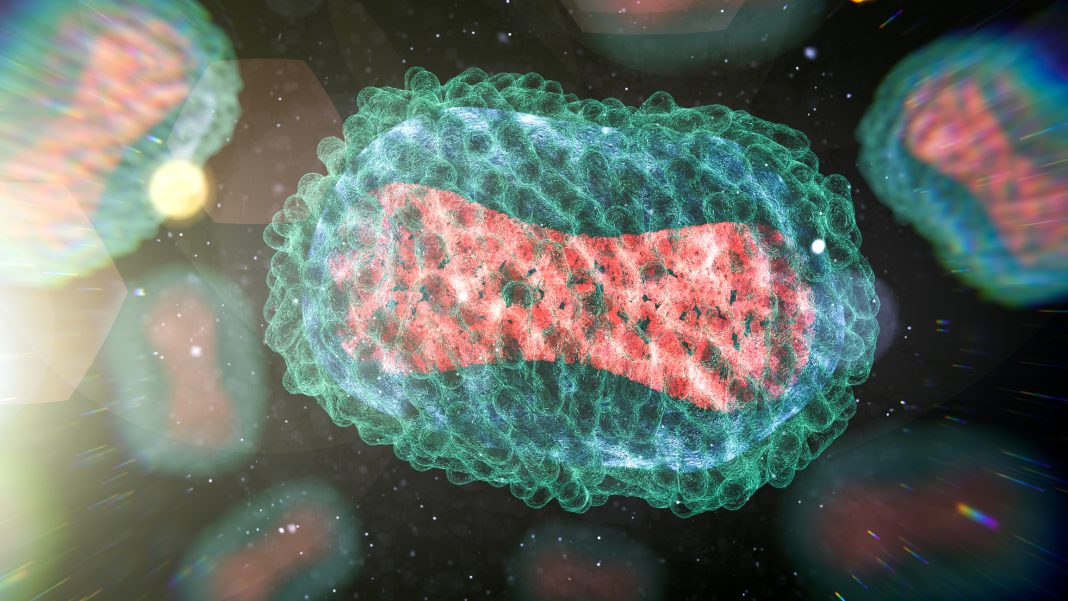There are no monkeypox-specific treatments currently available to treat the infection. There are, however, antiviral drugs (and vaccines) that protect against smallpox that may be used to prevent and treat monkeypox virus infections.
Currently, two drugs are approved by the FDA for the treatment of smallpox. Tecovirimat (TPOXX) is currently being recommended for some monkeypox patients. The drug, made by Siga Technologies, stops mature virions from being enveloped by targeting the viral VP37 protein. However, the drug has suffered from availability issues. In a statement on August 4, the company said, “we have received year to date, as of July 31, approximately $60 million of international orders from ten international jurisdictions, of which nine of the jurisdictions are first-time customers.”
The second approved drug, brincidofovir (TEMBEXA), is an oral antiviral made by Chimerix. However, the drug’s efficacy against monkeypox was called into question by a recent clinical study in which patients did not show benefit from treatment.
As of August 4, monkeypox cases in the United States are topping 6,600 (25,800 globally) and the United States declared monkeypox a public health emergency. In response, some researchers are racing to discover new antivirals to treat monkeypox.
In a new (not yet peer-reviewed) study, a group of researchers has screened approved-drug libraries using a cell-based virological infection assay.
The work, done in Japan—largely at the Research Center for Drug and Vaccine Development, National Institute of Infectious, in Tokyo—employed a drug repurposing approach. The group sought to identify already-approved drugs that may exhibit anti-monkeypox activity. They identified three candidates as potential anti-monkeypox drugs.
The research is posted in bioRxiv, in the preprint titled, “Potential anti-monkeypox virus activity of atovaquone, mefloquine, and molnupiravir, and their potential use as treatments.”
The study started with libraries of 132 clinically approved drugs—anti-viral, anti-fungal, and anti-parasitic/anti-protozoal agents. The researchers first treated Vero E6 cells with monkeypox. After adding the compounds to be tested, they observed cytopathic effects under a microscope 72 hours after infection.
Twenty-one drugs showed possible effects. The team chose three candidates to focus on. Atovaquone is an antibiotic used to prevent and treat Pneumocystis jiroveci pneumonia (PCP). Molnupiravir is the anti-viral compound found in Merck’s COVID-19 pill—currently used to treat SARS-CoV-2 infection. The third drug, Mefloquine, is a decades-old anti-malarial. Although still in use in certain places, the drug’s side effects, and a potential to cause permanent neurological and psychiatric injuries, have been controversial.
The three drugs dramatically reduced the production of monkeypox proteins in the team’s infection assay. In addition, the drugs’ activity was measured by quantifying viral DNA in infected cells following 30 hours of treatment (before onset of monkeypox-induced cytopathic effects) with the drugs at varying concentrations. The three drugs reduced intracellular monkeypox DNA levels in a dose-dependent manner without inducing cytotoxic effects.
The team worked to establish which phase in the viral life cycle is inhibited by the drugs. Mefloquine was suggested to inhibit viral entry. In contrast, atovaquone (which inhibits mitochondrial electron transport and the pyrimidine biosynthesis pathway of parasites) and molnupiravir (a nucleoside analog that targets polymerization of the viral genome) likely target post-entry processes.
In an effort to enhance anti-viral activity, the team analyzed combinations of the drugs and found that combining atovaquone with tecovirimat enhanced the anti-monkeypox effect of tecovirimat.
The team also predicted, using quantitative mathematical simulations, that atovaquone could promote viral clearance in patients by seven days. Lastly, the team showed that atovaquone and molnupiravir exhibited pan-Orthopoxvirus activity against vaccinia and cowpox viruses.
The authors noted that one limitation of the study was that it used only a cell culture infection assay. However, they noted, “Considering the limited amount of research regarding this virus to date and the current outbreak and spread of monkeypox across multiple continents, we believe rapid analyses using cell culture infection assays will be of benefit in providing scientific evidence to propose alternative treatment options for this infectious disease and to minimize its international spread.”


